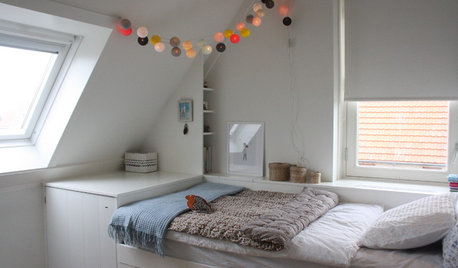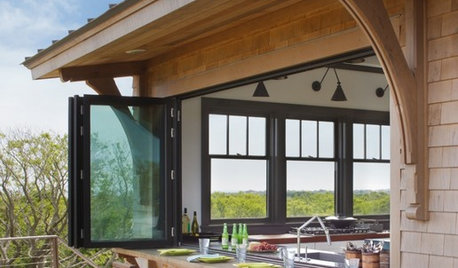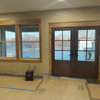Insulation dilemma
hickoryhusker
15 years ago
Related Stories

CONTAINER GARDENSSolve Your Garden Border Dilemmas With Planted Pots
Set your containers free from the patio — placed among plantings in the ground, they fill unsightly gaps, let you experiment and more
Full Story
REMODELING GUIDESDesign Dilemma: How Do I Modernize My Cedar Walls?
8 Ways to Give Wood Walls a More Contemporary Look
Full Story
ATTICS14 Tips for Decorating an Attic — Awkward Spots and All
Turn design challenges into opportunities with our decorating ideas for attics with steep slopes, dim light and more
Full Story
PATIOSAn Indoor-Outdoor Serving Bar Opens the Possibilities
Thinking about revamping your patio this year? Indoor-outdoor pass-throughs make entertaining outside even easier
Full Story
DECORATING GUIDES13 Decorating Tips for Short-Term Renters
Mirrors, curtains, lamps and other features set a stylish tone you can take with you
Full Story
URBAN GARDENS9 Urban Gardening Tips From Hong Kong Rooftops
Create a refuge from city chaos with these ideas gathered from rooftops as practical as they are picturesque
Full Story
SMALL HOMESCan You Live a Full Life in 220 Square Feet?
Adjusting mind-sets along with furniture may be the key to happiness for tiny-home dwellers
Full Story
MOST POPULAR5 Remodels That Make Good Resale Value Sense — and 5 That Don’t
Find out which projects offer the best return on your investment dollars
Full Story
MIDCENTURY HOMESHouzz Tour: Pursuing the Good Outdoor Life in Palos Verdes
With a refinished patio and an added deck, these homeowners can enjoy the abundant California sunshine
Full Story
FURNITUREObjects of Desire: Recliners That Don’t Look Like Recliners
Forget bulky, hulky eyesores. These 7 smart and svelte chairs — some without levers — have mastered the art of disguise
Full Story








worthy
mightyanvil
Related Professionals
Portsmouth Architects & Building Designers · Rantoul Home Builders · Garland Home Builders · Lincoln Home Builders · Dallas General Contractors · Decatur General Contractors · Forest Hills General Contractors · Markham General Contractors · Mount Prospect General Contractors · Redding General Contractors · Statesboro General Contractors · Sterling General Contractors · Troutdale General Contractors · Valley Station General Contractors · Waipahu General Contractorsintheville
energy_rater_la
garymunson_2009
energy_rater_la
mightyanvil
Ron Natalie
garymunson_2009
sierraeast
jeniferkey
mightyanvil
rollie
hickoryhuskerOriginal Author
worthy
rollie
garymunson_2009
worthy
klaire2001
hickoryhuskerOriginal Author
rollie
hickoryhuskerOriginal Author
thisishishouse